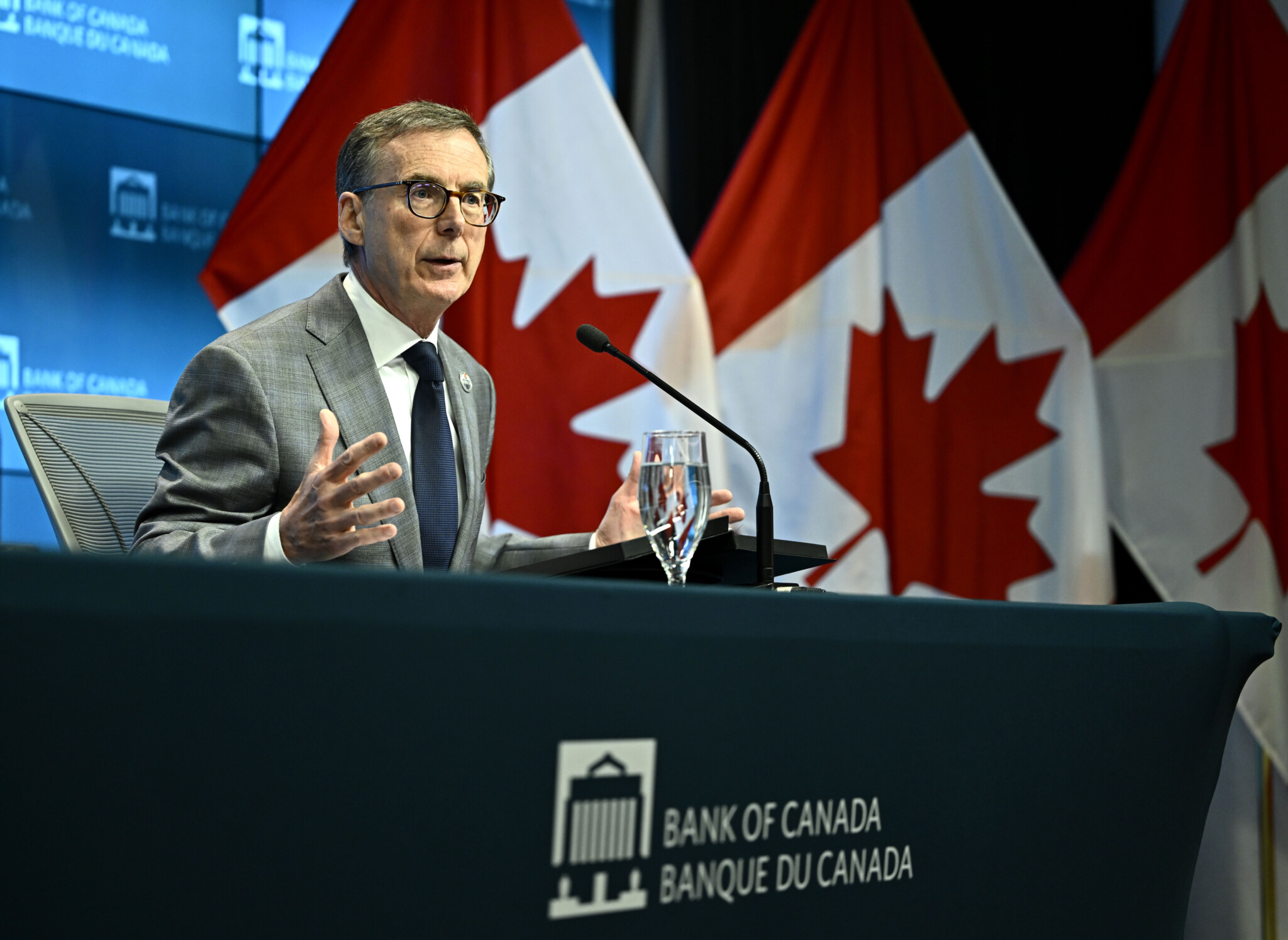As the Bank of Canada prepares to unveil its latest rate decision and new suite of forecasts tomorrow, it’s a good moment to assess the state of the nation’s economy.
Every three months, a dedicated team of PhD economists at the central bank immerses itself in a sea of data, employing sophisticated models to project economic conditions for the upcoming two years. These quarterly analyses not only form the foundation upon which Governor Tiff Macklem bases his policy decisions but are also the most comprehensive barometers of economic health available.
What we can expect tomorrow is likely a second interest rate cut following the Bank of Canada’s reduction of its policy rate in June for the first time in four years. The forthcoming forecasts will likely depict an economy that continues to grow but has hit a soft patch.
That soft patch, however, has a silver lining because it helps alleviate inflationary pressures and gives the central bank leeway to gently ease its restrictive stance. To recap: The recent inflation crisis led the Bank of Canada to implement rate hikes amounting to nearly five percentage points, marking one of the most aggressive tightening episodes in history.
The anticipated lower rates will offer welcome relief for indebted households and for an economy burdened by higher borrowing costs. However, it’s important to recognize they also signify current economic frailty.
How weak is it?
The economy is growing as slowly as possible without tipping into an outright recession. According to revised forecasts released last week, the International Monetary Fund projects Canada’s growth will average 1.3 percent in 2024, a slight increase from 1.2 percent in 2023.
While these numbers are slightly above market economists’ expectations, they fall just below the Bank of Canada’s April forecast of 1.5 percent growth for this year, indicating the central bank may revise its forecast downward tomorrow.
Despite not sounding catastrophic, these rates are historically sluggish, representing one of our weakest two-year growth periods in the past century, excluding recessions.
In fact, the data shows that without the significant surge we’ve seen in population over the past two years, driven by international migration, Canada would likely be in a recession. The country’s population has increased by 2.3 million during this period, growing at more than twice the pace of gross domestic product.
Many of these new arrivals — immigrants, foreign students and temporary workers — have successfully found jobs, which is fueling growth and economic activity. Over the past 24 months, employment has risen by more than 800,000, with 200,000 jobs added this year alone.
However, the strains of a rapidly rising population are evident, particularly in the housing market and increasingly in the job market. The sluggish economy is struggling to keep pace with our growing labour force.
Canada’s unemployment rate has climbed to 6.4 percent, up 1.4 percentage points since the end of 2022. This type of increase in unemployment is typically associated with recessions. The number of unemployed has grown by about 250,000 people in the past 12 months. These increases are usually seen only during recessions.
An uncertain landscape
It’s a peculiar situation. The Canadian economy presents a paradox: strong employment increases, typically a sign of strength, coupled with rising unemployment, a sign of weakness. While the economy is growing, it lags behind the rapid pace of population growth. The pie is expanding, but Canadians are receiving smaller slices.
This dichotomy underpins reports like the one released last week by the Royal Bank of Canada, titled: “Canada’s economy might not be in recession but it feels like one.” Such an environment is challenging for policymakers, who lack historical precedents to guide their decisions confidently.
And given such uncertainty, the Bank of Canada will remain cautious and hold off from dramatic rate cuts, unless the economy unexpectedly deteriorates sharply.
Rate path
Economists anticipate a measured pace from Governor Macklem, likely reducing the central bank’s policy rate by another 1.25 percentage points by the end of next year.
For borrowers, this translates to prime lending rates offered by commercial banks falling to just under 6 percent by December 2025, down from over seven percent at the start of this year. While that’s not a sharp decline in borrowing costs, economists believe this gradual reduction will spur a robust rebound. The IMF projects Canada will grow 2.4 percent in 2025, the fastest in the G7.
This base case scenario is quite favourable. Achieving growth above two percent with low and stable inflation is an optimal outcome. Exceeding this would require faster productivity growth than our economy is currently capable of producing.
However, there are less favourable scenarios, too. One possibility is that consumer price inflation fails to return to the Bank of Canada’s two percent target, slowing the rate reduction timeline.
Another adverse scenario involves a prolonged economic downturn and weak hiring, potentially driving unemployment even higher. In this case, the Bank of Canada might accelerate rate cuts to revive activity, although the extent would depend on inflation trends.
The worst-case scenario is a climbing jobless rate coupled with stubborn inflation, a unique situation since weak economies typically see falling inflation. But these are unusual times.
Get The Hub’s latest news and commentary on WhatsApp. Click here.









